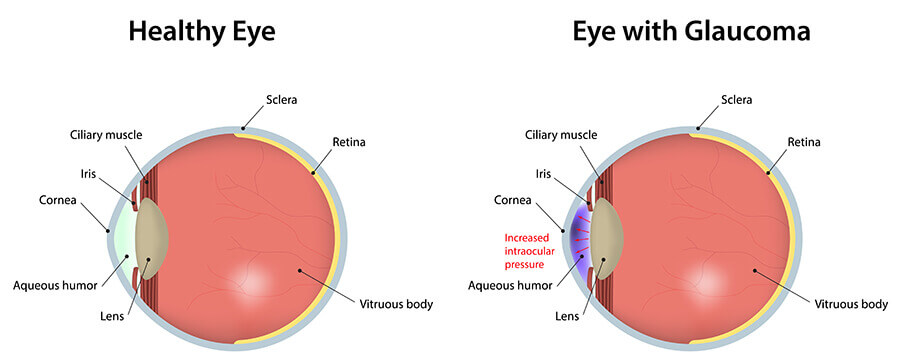Understanding Glaucoma
Glaucoma is a disease of the optic nerve which is the cable line connecting the eye to the brain. When natural-occurring eye fluid builds up and does not drain out of the eye properly, eye pressure, known as intraocular pressure (IOP) increases.
The increased eye pressure can cause damage to the fibers of the optic nerve, causing blind spots. These blind spots usually go undetected until the optic nerve is significantly damaged. If the entire nerve is destroyed, blindness is the result.

Early detection and treatment by an ophthalmologist are vital to preventing optic nerve damage and blindness from glaucoma.
General Classes of Glaucoma
Although there are over 40 types of glaucoma, they can be categorized into 2 classes:
Open-Angle Glaucoma
This is the most common form of glaucoma in the United States. The risk of developing open-angle glaucoma increases with age. As the drainage angle of the eye becomes less efficient over time, pressure within the eye gradually increases which can damage the optic nerve.
In some patients, the optic nerve becomes sensitive even to normal eye pressure and is at risk for damage. Glaucoma treatment is necessary to prevent further vision loss.
Angle Closure Glaucoma
Some eyes naturally develop with the iris (the colored part of the eye) too close to the drainage angle. In these eyes, which are often small and farsighted, the iris can block the trabecular meshwork completely. Since the fluid cannot exit the eye, pressure inside the eye builds and causes damage.

Schedule an eye exam with the Orange County, CA, glaucoma specialists at Harvard Eye Associates, even if you are not experiencing any vision problems. According to the Glaucoma Research Foundation, only about half of the over 3 million Americans who have glaucoma are aware that they have this eye disease. Don’t become a glaucoma statistic!











